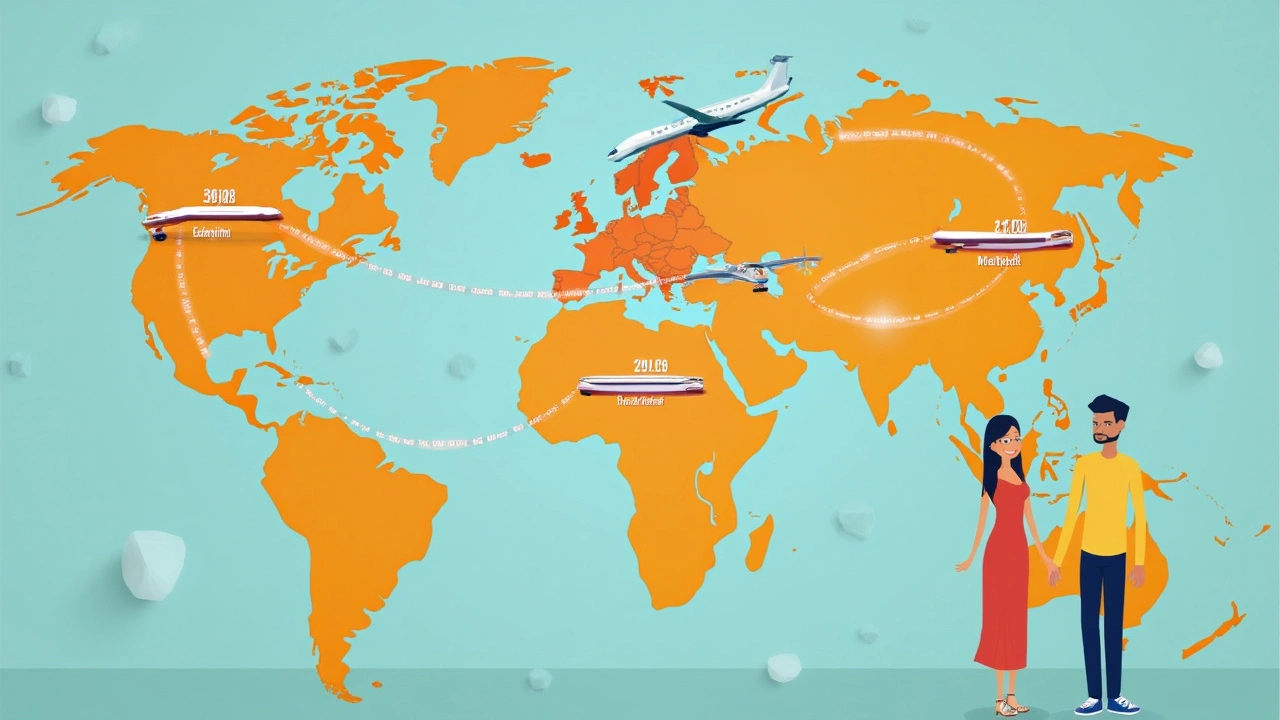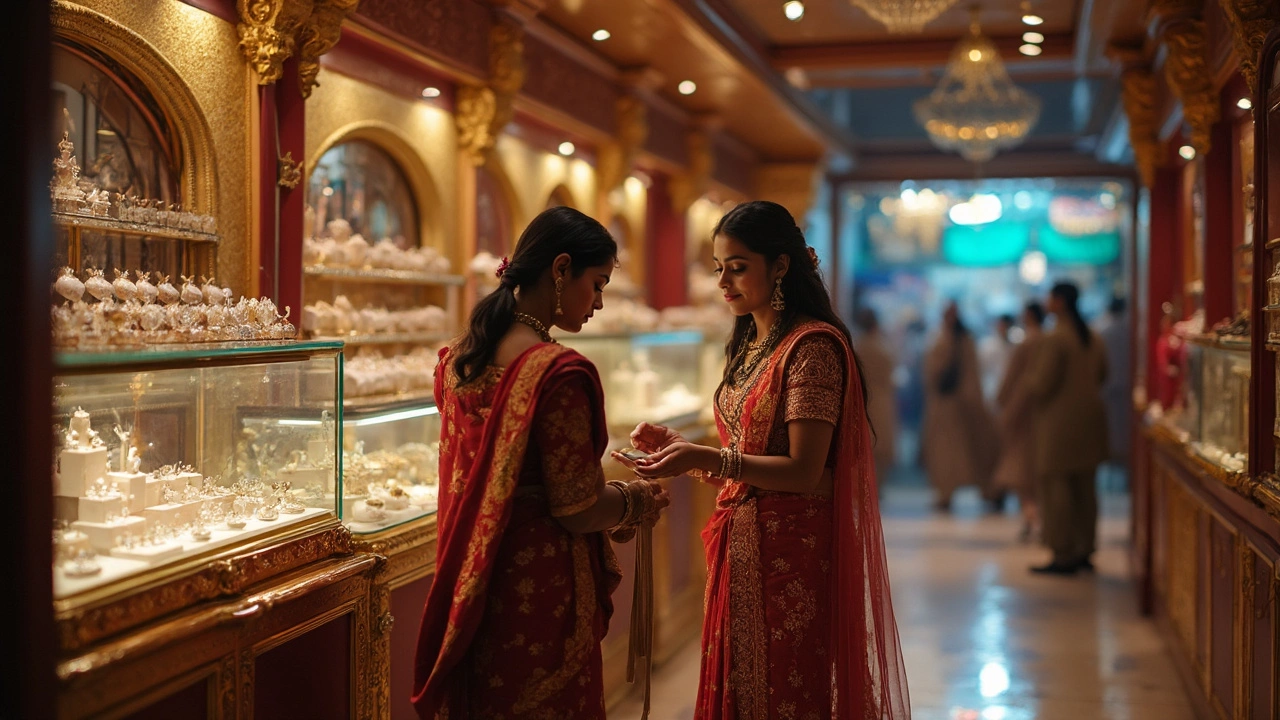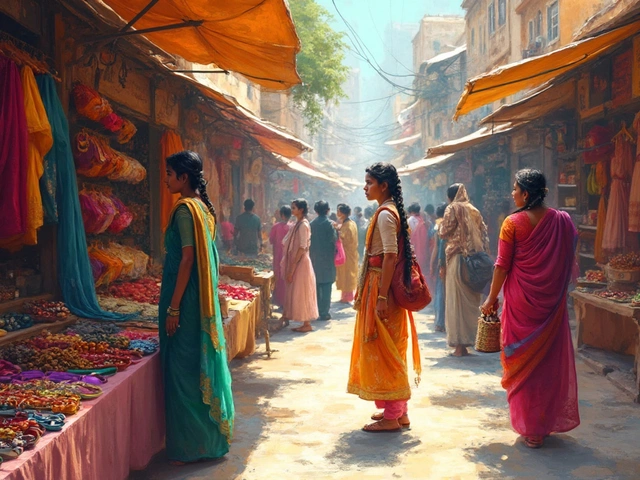Ask anyone where diamonds are cheapest, and you’ll probably hear South Africa, Dubai, or even Belgium. The real answer isn’t that simple. Diamond prices change with taxes, import duties, demand, and even local taste. Just because a diamond comes from a certain country doesn’t mean it’s sold cheapest there.
For anyone in India shopping for a diamond ring, the price tag can be a shock. So, is it actually cheaper to jet off to another country for a better deal? Or are the savings just hype once you factor in quality, certification, and after-sales service?
The truth is, diamond prices are driven as much by government policies and business markups as by where the diamond came from. If you want to score the best deal, you have to look beyond just the location—think taxes, exchange rates, and who you’re buying from.
Let’s break down where the best deals actually are, why prices differ, and what you should look out for if you’re thinking of buying a diamond abroad. Stick around if you want some real talk and honest tips—no sugarcoating, just facts and numbers that matter for your wallet.
- Why Diamond Prices Differ Around the World
- Top Countries for Cheap Diamonds
- Is It Cheaper to Buy Diamonds in India?
- How to Avoid Mistakes When Buying Abroad
Why Diamond Prices Differ Around the World
People think diamonds are like gold—priced the same everywhere. Not true. The price of a diamond can swing a lot, depending on where you're shopping. Why? There’s no single global market or price tag for diamonds, so everything from taxes to supply chains makes a difference.
Import duties play a big part. For example, India has import duties and GST that can hike up the price of a diamond by 10-15%. Countries like Dubai have almost no import tax on loose diamonds, which is why shoppers often check those markets first.
Another reason: local demand. In places where diamond jewelry is popular—like the US, China, and India—there are sometimes higher markups just because people are willing to pay. In spots where diamonds are mainly exported (think Belgium or Israel), you might snag a better deal, especially if you buy outside the big retail stores.
Certification and quality checks also add to prices in some countries. If you're buying in a country with strict rules on certified and conflict-free diamonds, you might pay a premium for peace of mind. In contrast, places with fewer regulations might offer bargains, but you risk getting ripped off or stuck with poor quality.
Currency exchange rates can sneak up on you, too. Sometimes, buying when your currency is strong against theirs means savings. Other times, a bad exchange rate eats up whatever you thought you’d save.
- Import taxes and duties: These can boost diamond prices by 10-20% in some countries.
- Local demand and markup: Popular markets often charge more.
- Certification standards: More checks mean extra costs but better guarantees.
- Currency exchange: Changes in rates can turn a deal into a dud.
The main takeaway? Diamond prices are all over the place for a reason. If you’re hunting for a deal, you have to factor in the full picture—not just the country, but taxes, quality, and the real cost after you walk out the door.
Top Countries for Cheap Diamonds
If you're chasing the best price for a diamond, you need to know which countries come out on top. The difference isn't just a few hundred rupees—it can be thousands of dollars, depending on where you shop and what you buy.
Here’s a list of countries where you’re most likely to find diamonds at lower prices:
- India – Thanks to local diamond cutting factories and low labor costs, India’s diamond prices are often more wallet-friendly than most Western countries. Cities like Surat handle over 90% of the world’s diamond processing. But retail markups vary, so shop around.
- Dubai, UAE – Dubai is a go-to spot for buying tax-free diamonds. The Dubai Gold Souk has lots of competition, which keeps prices down. Plus, no VAT or import duties on polished stones means more savings for buyers.
- Belgium (Antwerp) – Antwerp is a global hub for diamond trading. While it’s mostly for wholesale buyers, even retail prices can be lower compared to the US or UK, especially if you negotiate or buy directly from dealers in the Diamond District.
- Hong Kong – No import duties or sales tax and a competitive market make diamonds cheaper here than in many Western countries.
- South Africa – The country is famous for its diamond mines, but don’t assume rocks are dirt-cheap. When you factor in export restrictions and taxes, prices may not be as low as you think, but you still might score a deal, especially on stones sourced and cut locally.
Wondering how much the difference actually is? Here’s a quick comparison for a 1-carat, G color, VS1 clarity, round diamond in May 2025:
| Country | Average Price (INR) | Notes |
|---|---|---|
| India | 3,10,000 | Wholesale, uncertified stones can be lower |
| Dubai | 3,38,000 | No VAT, easy negotiation |
| Belgium | 3,28,000 | Direct from dealer deals possible |
| Hong Kong | 3,40,000 | No sales tax |
| USA | 3,80,000 | Higher taxes, retail markups apply |
The catch is, buying in these countries depends on several things: market conditions, currency rates, and the reliability of your dealer. If you’re new to this, always ask for proper certification. And yes, it’s tempting to buy overseas to save a few bucks, but don’t ignore travel costs, customs duty, and import hassles when bringing your diamond home, especially to India.
So, where’s the best deal? If you’re in India or planning to visit Dubai or Antwerp, start your search locally first—sometimes the lowest price is closer than you think.

Is It Cheaper to Buy Diamonds in India?
If you’re living in India and eyeing the display at your local jewelry shop, you might wonder: am I actually getting a good deal? Here’s the thing: India isn’t just a big market for diamonds. It’s the world’s main hub for diamond cutting and polishing—about 90% of all cut diamonds pass through Indian factories, mostly in Gujarat. That means less shipping and handling, and often lower labor costs. Sounds good so far, right?
But don’t start celebrating just yet. While labor is cheaper, retail taxes and the Goods and Services Tax (GST) can quickly bite into those savings. India slaps a 3% GST on loose diamonds, and diamond jewelry comes with its own added taxes and markups. Plus, local retailers don’t always pass the cost advantage to customers; some keep margins high, banking on tradition and trust.
Let’s get specific. Here’s what you could expect for a 1-carat, round, G color, VS1 clarity, certified diamond in early 2025:
| Country | Typical Retail Price (1-carat, G-VS1) |
|---|---|
| India | $4,500 - $6,000 |
| Dubai (UAE) | $4,200 - $5,500 |
| Belgium (Antwerp) | $4,400 - $5,900 |
So, is India the absolute cheapest? Sometimes, yes—but only if you buy smart:
- Stick to certified stones from well-known retailers (IGI or GIA certificates add trust).
- Bargain. Haggling isn’t just allowed, it’s expected, especially at local jewellers in cities like Mumbai and Surat.
- Compare online prices with shops—sometimes online wins thanks to lower overheads.
- Watch out for hidden costs. Some showrooms lure you in with low diamond rates but then stack up making charges and taxes at billing.
The real kicker? Because of tight regulations, it’s tough to bring back diamonds legally from most other countries without paying customs duties. That wipes out any savings from a quick overseas purchase.
The bottom line: India can offer a diamond prices advantage, especially if you know how to hunt for value. But you won’t always get the lowest price without a little homework and negotiation.
How to Avoid Mistakes When Buying Abroad
Traveling for a diamond deal can sound tempting, but there are some big traps that catch even smart shoppers. Before you get wowed by low prices in another country, get your basics right. One of the main rules: always check for transparent certification. Stick to diamonds graded by labs like GIA, IGI, or HRD. Without proper certification, you’re just trusting the seller’s word—and that’s risky.
Another mistake? Forgetting about taxes and customs. For Indians bringing back a diamond, customs duty can hit up to 15%, and you have to pay GST on top of that. These costs stack up fast and can erase any savings from buying in places like Dubai or Belgium.
- diamond prices online may look cheaper than Indian prices, but after you add duties, it’s not a big gap.
- Never pay for diamonds in cash alone. Use cards or payments that offer records, so you’re protected if things go wrong.
- Get a written invoice that shows carat, cut, clarity, and color, plus the grading lab’s report number.
- If you’re new to diamonds, ask a local trusted jeweler to check the stone before you hand over your money abroad. Video calls work if you can’t travel with an expert.
Here’s a quick look at typical extra costs shoppers face when buying abroad versus India:
| India | Dubai | Belgium | |
|---|---|---|---|
| Base Diamond Price | ₹1,00,000 | ₹92,000 | ₹90,000 |
| Customs Duty (India) | None | ₹13,800 | ₹13,500 |
| GST (India) | 3% = ₹3,000 | 3% = ₹2,760 | 3% = ₹2,700 |
| Total Final Cost | ₹1,03,000 | ₹1,08,560 | ₹1,06,200 |
This table shows how fees catch up quickly. Unless you’re spending a fortune or looking for a rare cut, buying at home often makes more sense—plus, you get after-sales service if something goes wrong.
Be wary of prices that seem too good to be true. Some sellers mix treated or lab-grown diamonds and pass them off as natural. Insist on viewing the certification and double-check its authenticity on the grading lab’s website. Scams are more common overseas, especially in tourist hubs.
Bottom line: research, double-check everything, and don’t ignore import costs. A great deal in another country can turn sour once you get home and see the real bill. Don’t let savings on paper put you in a spot you’ll regret.



